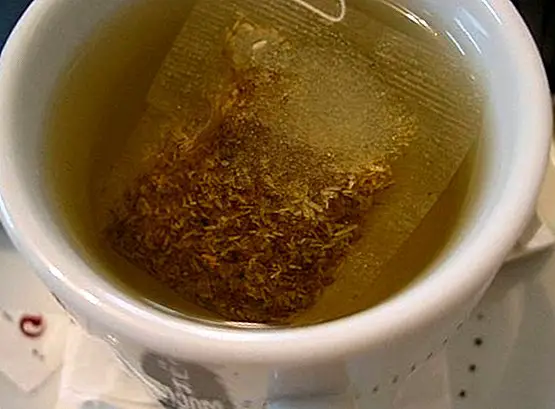Chufa Horchata: unique benefits and refreshing properties
The horchata It is a delicious whitish drink originally from Sudan that, fundamentally, was consumed in ancient civilizations such as the Egyptian. It is obtained from the chufa, a tuber of brown color on the outside and yellowish on the inside, whose cultivation in our country was introduced by the Arabs in the 8th century.
Besides being a refreshing drink especially recommended in summer, and having - in addition - a tremendously particular flavor, horchata stands out for its nutritional properties.

In fact, it stands out for being a drink that, in addition to refreshing us on the hottest days of the year, contains an important nutritional richness that translates into the contribution of a great diversity of essential nutrients for our organism, besides helping us to hydrate our organism during Spring or summer.
Now that summer has just ended, I'm sure many of you miss those good ones glasses of horchata that you tasted while you had the whole Mediterranean coast in front of your eyes. Well now that we are in the middle of autumn, you can continue doing it without any problem. And not only to disconnect from your problems and all the daily stress. But also so that you can benefit from all the nutritional properties that this drink provides us with chufa.
But first of all, let's talk a little about the history of horchata. Even if it is thought otherwise, it is a drink of Egyptian origin since huge amounts of this tiger nut plant have been found in the Inside the jaguar of the most emblematic pharaohs. And therefore, its consumption was very widespread among the upper classes of society in that region of North Africa.
Around the eighteenth century AD, this tuber came to the Valencian municipality of Alboraya right in the middle Arab heyday in the east of the Iberian Peninsula. But why is not it called juice or tiger nut juice? Surely many will ask. Well everything is due to Jaime I, the Aragonese king of thirteenth century that in the heat of reconquest of Valencia He came to try this refreshing drink. And after being captivated by its taste, he snapped: "Acò és or, xata!" (this is gold, flat).
And what is the tiger nut?
The chufa It is a tuber of very small size (yes, in the same way as potatoes or sweet potatoes are, although its size is obviously smaller), with a curious appearance in the form of knots, from the roots of the sedge plant avellanada, which is known scientifically with the name ofCyperus esculentus.

Learn about the benefits of horchata for health
What have you left of the most surprised about the origins of this peculiar drink? Well, the thing does not end here. And now we are going to go desgrando some of the benefits that brings the horchata in general.
It is rich in minerals
Among those that stand out magnesium, iron, phosphorus and calcium. All of them perform a task of the most important to strengthen our entire body.
For example, the magnesium It is responsible for promoting our metabolism. For its part, calcium strengthens our bones and iron gives us energy. Finally, phosphorus will promote the correct functioning of the brain.
A great source of vitamin C and E
Thanks to the first we will strengthen all our defenses with which we will avoid viral processes like colds or flu. With the second we rejuvenate all our skin and hair thanks to its antioxidant effects.
Does not contain lactose or cholesterol
So it is a drink that you can drink from time to time without fear of taking a few extra kilos. As long as you do not add too much sugar apart. It also prevents diarrhea due to its high starch content and helps decrease the levels of (bad) cholesterol in the blood.
Fight some cardiovascular diseases
Among which stand out the hypertension. In this way, its consumption is recommended for those who have high blood pressure.
How to make horchata at home Discover how in three easy steps
One of the great advantages of the horchata apart from its unmistakable flavor, is its simple process of preparation. Do you therefore encourage yourself to prepare it directly at home? Well, you're going to need 250 grams of tiger nut, lemon rind, a little cinnamon, sugar and a liter of water.

Once you have everything at hand, you have to prepare it in the following way:
- We wash and peel all the tiger nuts. And we leave them to soak for about 12-15 hours until the water is completely clean.
- We add the rest of the ingredients. It will be necessary to introduce cinnamon inside the blender, lemon rind next to the liter of water. You can also add a little sugar to suit the consumer.
- We crush everything. It must be ensured that a homogeneous mixture is achieved.Once this is done, we go through a sieve. To finish, you just have to put this drink for a couple of hours in the fridge to taste it afterwards as fresh as possible.
Curiosity! How do you take tiger nut horchata in Valencia?
Although in different countries like Italy, Cuba, Venezuela or Puerto Rico there are different variants, there is no doubt that the most popular and traditional horchata is the one consumed and made in Valencia (Spain).

Why? Fundamentally because it was here that the tiger nut first began to be cultivated, concretely reaching the municipality of Alboraya, when the Arabs moved their cultivation from the region of Chuf (in Sudan) to Valencia.
In fact, nowadays it is possible to enjoy this delicious drink, handmade, in the popular and famous Avenue de la Horchata de Alboraya, and visit the Daniel Horchateria, with its mural of tiles that becomes the most recognized establishment of the zone.
A) Yes, In Valencia it is very common to accompany the horchata de chufa with the delicious fartons, an elongated and sweet bun, with its tender, spongy and soft consistency, which is soaked in the horchata in order to absorb it.
This article is published for informational purposes only. You can not and should not replace the consultation with a Nutritionist. We advise you to consult your trusted Nutritionist.


